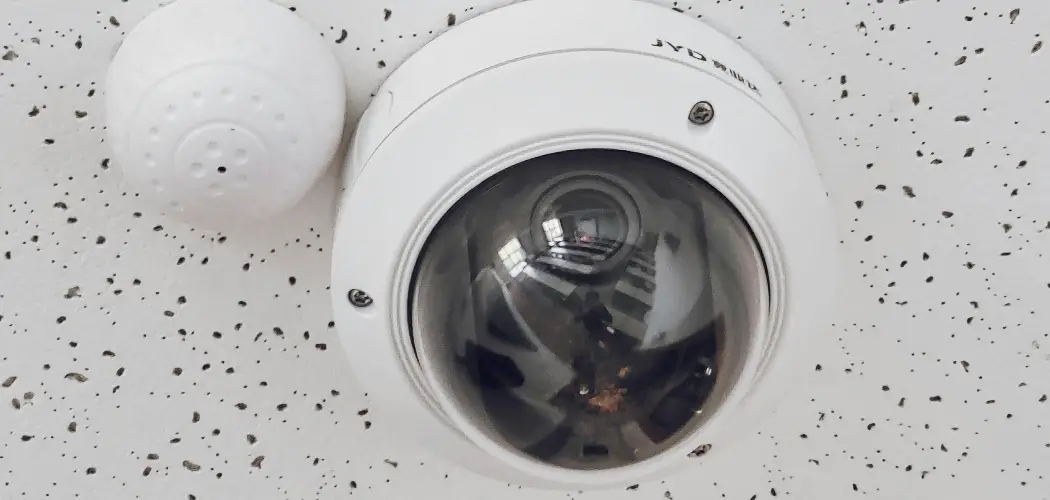Are you fed up with the constant surveillance and audio recording in your workplace or home? Fortunately, there are ways to block CCTV audio without damaging the equipment or getting into legal trouble.
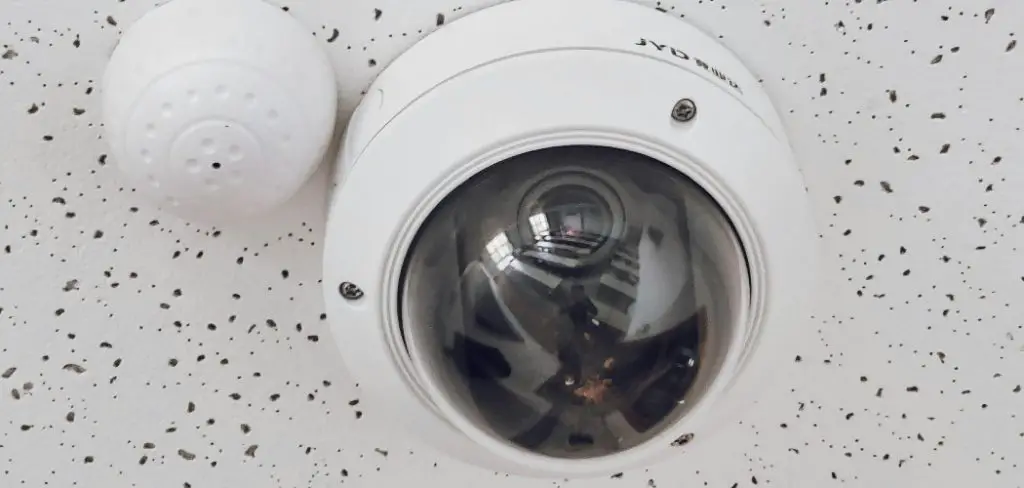
In an era where surveillance is omnipresent, concerns about privacy, especially audio recording, have surged to the forefront of societal discourse. When it comes to CCTV systems, the integration of audio recording capabilities raises ethical and legal questions.
Blocking audio recording by CCTV systems is not only a matter of safeguarding one’s privacy but also aligning surveillance practices with legal standards and ethical norms. This guide aims to introduce practical strategies and legal considerations on how to block CCTV audio.
Whether you’re a business owner, security professional, or simply someone concerned about personal privacy, understanding how to effectively block or limit audio recording can empower you to take control of your privacy in monitored environments.
Reasons for Blocking CCTV Audio
Before we dive into the methods of blocking CCTV audio, it’s important to understand why you may want to do so. Some common reasons include:
- Privacy Concerns: You may feel uncomfortable with the idea of being constantly monitored and recorded, especially in private or sensitive areas.
- Legal Restrictions: In some states or countries, audio recording without consent is illegal. Blocking CCTV audio can ensure compliance with local laws and regulations.
- Noise Pollution: Constant audio recording can be disruptive and distracting in a workplace or residential setting. Blocking it can help create a more peaceful environment.
- Preventing Eavesdropping: Audio recording can potentially capture private conversations, making it important to block in areas where confidentiality is crucial.
Once you have identified your reasons for wanting to block CCTV audio, it’s time to explore the methods available.
What Will You Need?
The good news is, you don’t need any special equipment to block CCTV audio. The methods listed below can be implemented with items that are easily accessible and affordable.
- Adhesive Tape: You can use this to cover the microphone on a CCTV camera, blocking the sound from being picked up.
- White Noise Machine: Generating consistent white noise can disrupt and drown out audio recordings.
- Audio Jammer: This device emits sound waves that can disrupt and distort audio recordings, rendering them useless.
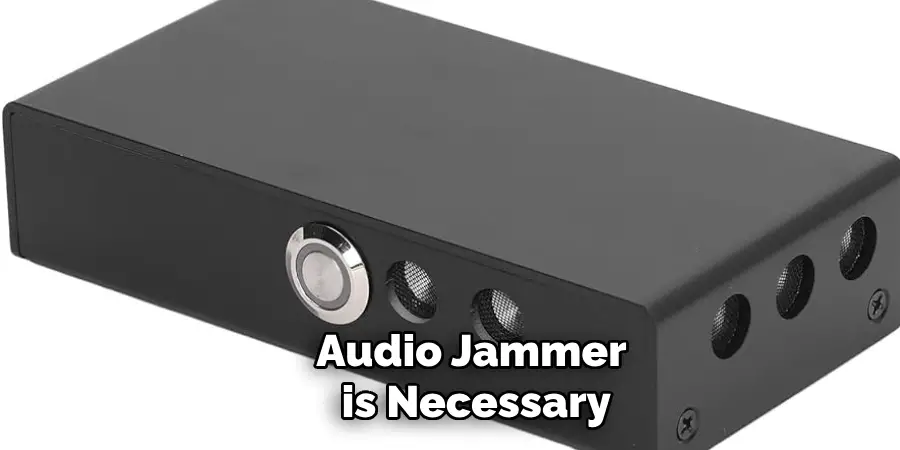
Once you have the necessary items, you can proceed with implementing the methods discussed below.
10 Easy Steps on How to Block CCTV Audio
Step 1. Disable Audio Recording Function:
The most straightforward way to block CCTV audio is by disabling the audio recording function in the system settings. This method is ideal if you have access to the CCTV system and its settings. You can find the option to disable audio recording in the camera settings or recording settings.
Step 2. Cover the Microphone:
If disabling the audio recording function through the system settings is not an option, manually covering the microphone on the CCTV camera is a simple yet effective alternative. Most CCTV cameras have a small, visible microphone hole designed to pick up sound. By placing a piece of adhesive tape over this microphone hole, you can significantly reduce the audio recording capability, if not entirely mute.
While this method does not require technical skills, it’s important to make sure that the tape used is not so thick or opaque that it damages the microphone or leaves a residue that could affect the camera’s functionality in the future. Using lightweight, easy-to-remove adhesive tape ensures that you can block audio without leaving permanent marks or damaging the equipment.
Step 3. Use a White Noise Machine:
Placing a white noise machine near the CCTV camera is another effective way to block its audio recording capabilities. White noise machines emit a consistent sound across all hearable frequencies, which can mask conversations and other sounds, making it difficult for the camera’s microphone to pick up and record clear audio.
This method is particularly useful in environments where conversation privacy is paramount. It’s important to ensure the white noise machine is positioned close enough to the camera to effectively disrupt the audio recording, yet not so loud as to be disturbing or overly disruptive to the environment.
Step 4. Invest in an Audio Jammer:
An audio jammer is a sophisticated device designed to interfere with the microphone’s ability to record clear audio. It works by emitting sound waves that are virtually indistinguishable to the human ear but can drastically disrupt or distort audio recordings. Audio jammers come in various sizes and potency levels, allowing for flexibility depending on the size of the area you wish to protect from audio surveillance.
When positioning an audio jammer, it is crucial to place it in close proximity to the camera while ensuring it does not interfere with the daily activities of the space. This method is especially effective in sensitive areas where privacy is a top priority and can serve as a more permanent solution compared to the previous options.
Step 5. Consult Legal Advice:
Before implementing any method to block CCTV audio recording, it is advisable to consult with a legal expert or attorney familiar with privacy and surveillance laws in your jurisdiction. This step ensures that your approach to blocking audio is not only effective but also compliant with local laws and regulations.
Legal advice can provide clarity on the legality of using devices like audio jammers or the implications of disabling audio recording capabilities on CCTV systems. Consulting with a legal expert can help you avoid potential legal pitfalls and ensure your actions are within the bounds of the law, thus protecting you from possible legal repercussions.
Step 6. Re-evaluate the Placement of CCTV Cameras:
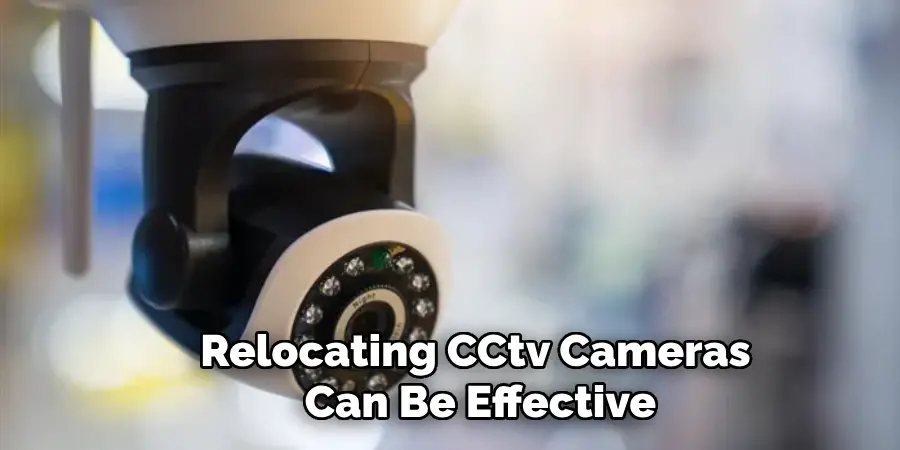
Sometimes, the best way to address privacy concerns regarding CCTV audio recording is to reassess and adjust the placement of the cameras. Cameras positioned too close to private or sensitive areas, such as meeting rooms or personal spaces, are more likely to inadvertently capture private conversations.
By relocating these cameras to less intrusive locations, you can reduce the chance of picking up unwanted audio. When re-evaluating camera placement, consider areas that are less likely to have confidential conversations but still require surveillance for security purposes. This method does not require technical modifications to the CCTV system and can be an effective way to balance security needs with privacy concerns.
Step 7. Regularly Update And Maintain CCTV System Software:
Regular updates and maintenance of your CCTV system software can significantly impact its audio recording capabilities. Manufacturers often release software updates that can improve the performance of your CCTV system, including enhancements to audio filtering and privacy settings. Ensuring your system is up-to-date can help you take advantage of these improvements.
Additionally, regular maintenance checks allow you to identify and fix any issues that might affect the audio recording quality or the overall functionality of the system. This step is crucial for those who rely on their CCTV systems not only for security but also for maintaining privacy. By keeping the system updated and well-maintained, you can ensure that it operates efficiently and in compliance with your privacy needs.
Step 8. Enhance Privacy through Landscaping:
Incorporating strategic landscaping and architectural designs can serve as an indirect yet effective way to minimize the impact of CCTV audio surveillance. Planting dense foliage or constructing barriers such as walls or privacy fences around sensitive areas can naturally dampen sound travel and reduce the amount of audio captured by CCTV microphones. This approach not only enhances the aesthetic appeal of the space but also adds an extra layer of privacy protection.
When planning landscaping or architectural modifications, it’s essential to consider the growth patterns and sound absorption qualities of plants, as well as the sound-blocking capabilities of materials used for structures. This method can complement technical solutions by providing a physical buffer that further secures the privacy of conversations within the protected area.
Step 9. Implement Encryption Technologies:
Implementing encryption technologies can prove invaluable to safeguard the privacy of audio recordings captured by CCTV systems. Encryption works by scrambling the audio data, making it undecipherable to unauthorized listeners. This added layer of security ensures that even if the audio data is intercepted, it remains inaccessible without the proper decryption key.
When selecting encryption technologies, it’s crucial to choose a system that offers robust security features and is compatible with your existing CCTV setup. Incorporating encryption not only protects the privacy of conversations captured by the CCTV but also enhances the overall security of the surveillance system. Maintaining updated encryption standards and regularly reviewing your encryption practices can help effectively prevent unauthorized access to audio recordings.
Step 10. Conduct Regular Privacy Audits:
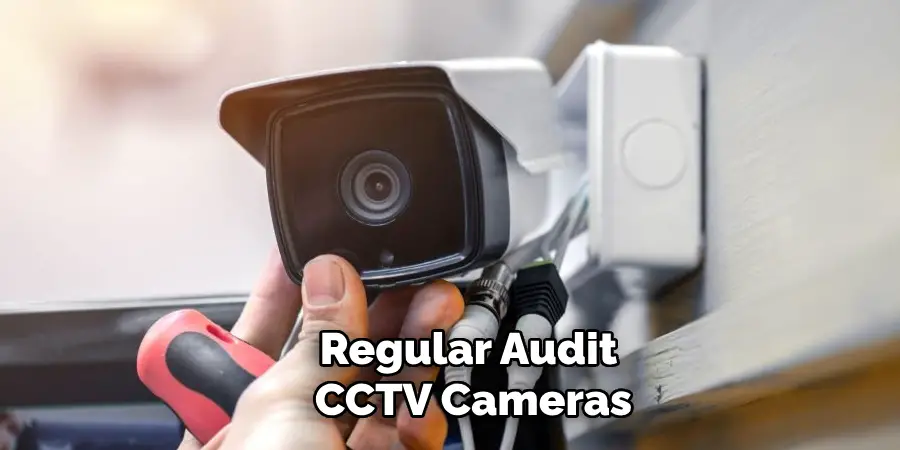
To ensure that all measures for protecting audio privacy through your CCTV system remain effective and in line with current privacy standards, it is advisable to conduct regular privacy audits. These audits should assess the placement of cameras, the efficacy of audio jammers, encryption measures, and any other strategies employed to limit audio recording.
Additionally, privacy audits can help in identifying new vulnerabilities or areas where privacy protection can be enhanced. During these evaluations, consider both the technical and physical aspects of your surveillance setup. Regularly scheduled audits, with the help of privacy or security consultants, can keep your practices up to date and reinforce your commitment to protecting privacy within your surveilled environment.
By following these steps, you can proactively address concerns related to audio recording through your CCTV system while also maintaining its security benefits.
5 Additional Tips and Tricks
- Utilize White Noise Machines: Positioning white noise machines near the CCTV can help mask conversations and other sounds. The constant background noise makes it difficult for the microphones to pick up clear audio.
- Strategic Placement of Sound Sources: Place speakers or other noise-making devices near the CCTV, pointing away from the areas you don’t want to be recorded. This will create a distraction and draw attention away from conversations or activities.
- Use Audio Jamming Devices: Similar to white noise machines, audio jamming devices emit a high-frequency sound that interferes with CCTV microphones. These can be placed near the camera or on your person to block audio capture.
- Speak Softly or Cover Your Mouth: When having sensitive conversations in an area monitored by CCTV cameras, speak softly or cover your mouth with your hand. This can make it difficult for the microphones to pick up clear audio.
- Be Aware of CCTV Blind Spots: Familiarize yourself with the areas where CCTVs are placed and note any blind spots or areas with poor audio coverage. Use these spaces to your advantage when having private conversations.
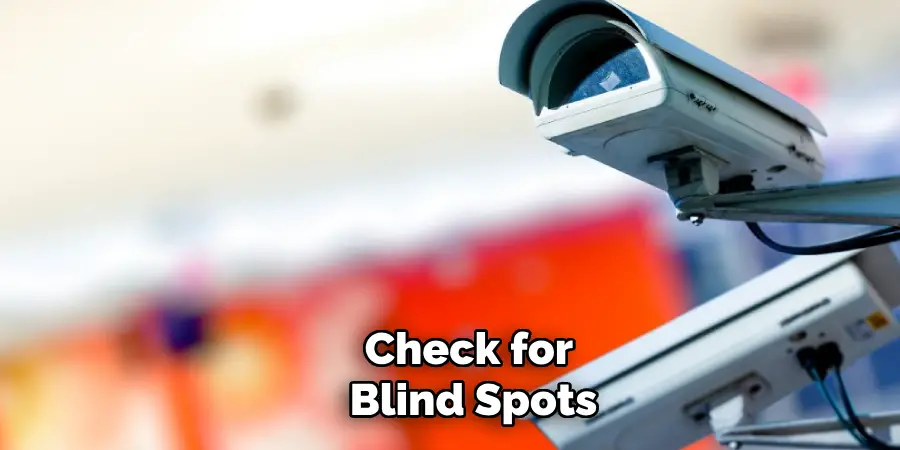
By following these additional tips and tricks, you can further enhance your privacy and security against CCTV surveillance.
5 Things You Should Avoid
- Avoid Using Illegal Jamming Devices: It’s important not to use devices that are illegal in your jurisdiction. Many countries have strict regulations against the use of certain types of jamming equipment. Engaging in illegal activities can lead to severe penalties.
- Don’t Damage Public or Private Property: Attempting to physically alter or damage CCTVs to block their audio capabilities is illegal and unethical. Always respect property rights and seek lawful ways to protect your privacy.
- Don’t Rely Solely on One Method: Depending too much on a single privacy method, such as audio jamming devices, isn’t effective. Audio capture technology can vary greatly, and what works for one system might not work for another.
- Avoid Loud Conversations: Speaking loudly near CCTVs can counteract your efforts to block audio recording. It amplifies your voice and makes it easier for microphones to pick up, even with countermeasures in place.
- Don’t Ignore Legal Protections: Before taking steps to block CCTV audio, research and understand the legal protections regarding privacy and surveillance in place. Ignoring them could lead to breaking the law or missing out on simpler, legal methods of protection.
By avoiding these pitfalls, you can ensure that you are taking responsible and effective measures to protect your privacy against CCTV audio surveillance.
How Do You Know if Your CCTV is Recording Audio?

There are a few ways to determine if your CCTV is recording audio:
- Check the Camera Specifications: Most CCTV cameras will list whether or not they have audio capabilities in their specifications. If you still have the original packaging or manual, you can also check there for this information.
- Look for a Microphone Symbol: Many CCTVs that record audio will have a small microphone symbol on the camera itself or on the packaging. This is a quick and easy way to determine if your CCTV has this capability.
- Review Footage: If you already have existing footage from your CCTV, review it for any audio recordings. You may be able to hear conversations or other sounds in the background that were not picked up by the video alone.
If you are unsure about the audio capabilities of your CCTV, it’s best to err on the side of caution and assume that it does have recording capabilities. This will allow you to take necessary precautions to protect your privacy. Overall, being informed and aware of how CCTVs work and their potential for audio surveillance is crucial in protecting your privacy.
Can a CCTV Camera Work Without Red Light?
Yes, a CCTV camera can work without a red light. The red light on some CCTV cameras indicates that the camera is recording, but this can be disabled or turned off in certain settings. Some CCTVs also have infrared capabilities, allowing them to record and capture images in low-light or dark conditions without the need for a visible red light.
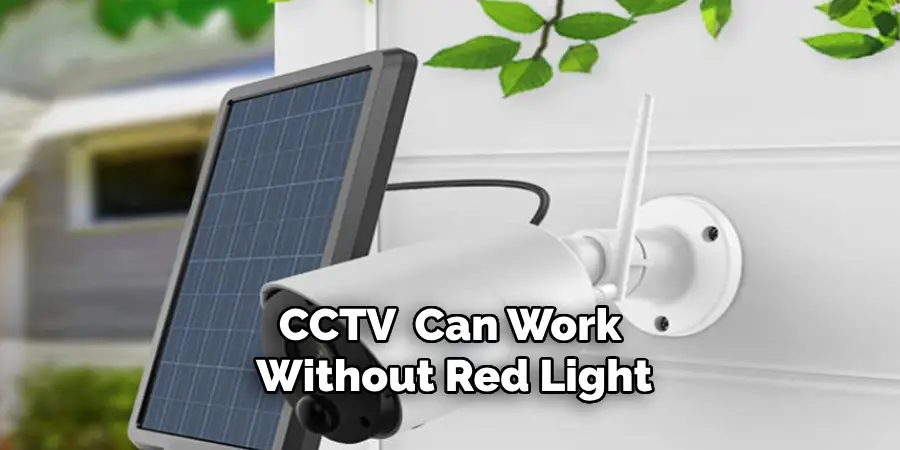
Additionally, there are covert or hidden CCTV cameras that do not have a visible red light and can be disguised as everyday objects such as clocks or picture frames. These types of cameras are often used for surveillance purposes without the knowledge of those being recorded.
It’s important to note that just because a CCTV does not have a red light, it does not necessarily mean it is not recording audio.
What Happens if You Unplug a Security Camera?
Unplugging a security camera will disable it from recording or capturing any footage. However, depending on the type of CCTV and its storage capabilities, it may have already saved previous recordings onto a hard drive or cloud storage. Removing the power source will not erase these recordings.
Additionally, if the CCTV is connected to a central monitoring system, unplugging it may trigger an alert or notification to security personnel. Some CCTV systems also have backup batteries that can continue recording for a short period of time in case of a power outage.
Unplugging a security camera may also be considered vandalism or tampering, which is illegal and can result in penalties. It’s important to always follow legal and ethical guidelines when dealing with security cameras.
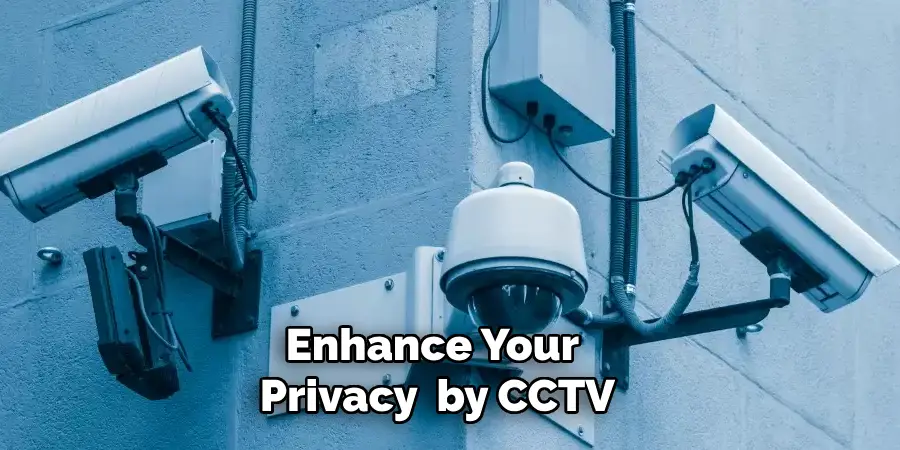
Conclusion
In conclusion, successfully blocking audio recordings by CCTV cameras involves a combination of technical knowledge, legal awareness, and practical steps. When attempting to safeguard your privacy, it’s essential to consider the legality and ethics of your actions.
Utilizing devices like audio jammers responsibly, being aware of your surroundings, and employing simple tactics such as speaking softly or utilizing blind spots can significantly enhance your privacy without infringing on laws or ethics. Always prioritize understanding the capabilities of the CCTV systems you encounter and take informed steps to protect your conversations.
Hopefully, the article on how to block CCTV audio has helped you in understanding the various ways to protect your privacy, making you feel more secure and empowered. Stay safe!

